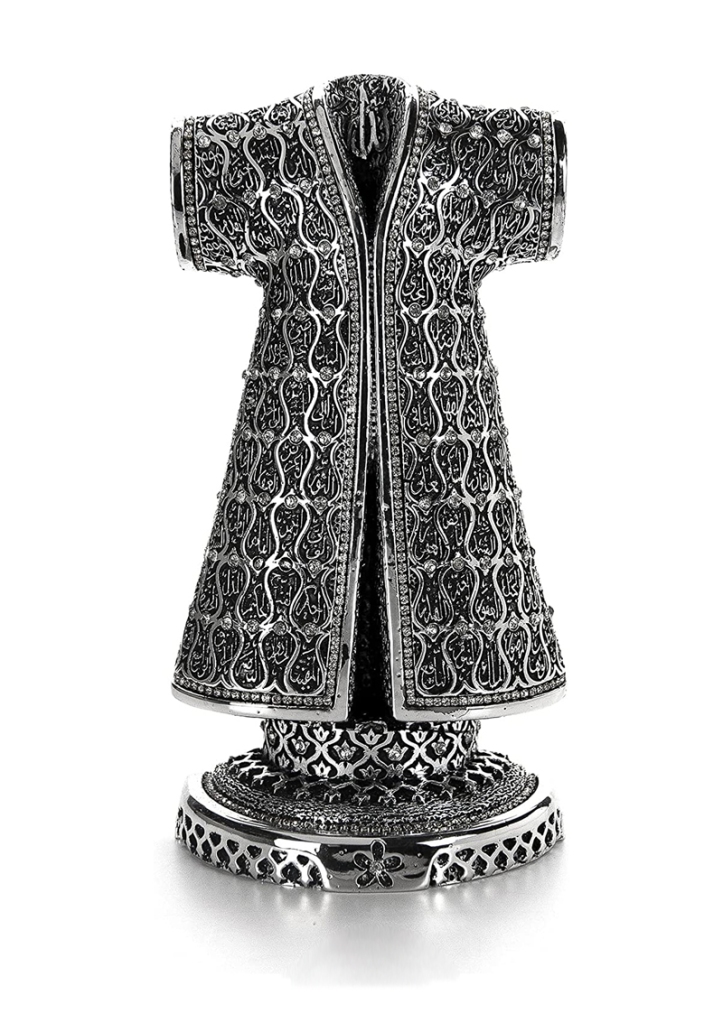Silver Kaftan “with 99 Names of Allah” Statue
This Islamic Silver Kaftan Statue is made of polyester, making this a strong Islamic trinket so being durable and made to last. Asma al Husna Caftan, a decorative islamic jewel made in Turkey, will suit your unique style to create an harmonious spiritual environment as a decoration. The 99 Names of Allah (Asma ul Husna in Arabic), are the Names of God which are described in the 114 Surahs of Holy Quran and Sunnah, amongst other places. There are many benefits of memorizing 99 names of Allah. There is a tradition in Sufism to the effect the 99 names of God point to a mystical “Most Supreme and Superior Name” (ismu l- ‘A ‘zam). This “Greatest Name of God” is said to be “the one which if He is called (prayed to) by it, He will answer“. A Kaftan or Caftan (Persian: Khaftān) is a variant of the robe or tunic. Originating in Asia, it has been worn by a number of cultures around the world for thousands of years. In Russian usage, Kaftan instead refers to a style of men’s long suit with tight sleeves. Though the Kaftan is of ancient Mesopotamian (modern-day Iraq) origin, it has been used by many West and Southwest Asian ethnic groups. It may be made of wool, cashmere, silk, or cotton, and may be worn with a sash.
Popular during the time of the Ottoman Empire, detailed and elaborately designed garments were given to ambassadors and other important guests at the Topkapi Palace. Variations of the kaftan were inherited by cultures throughout Asia and were worn by individuals in Russia (North Asia, Eastern Europe and formerly Central Asia), Southwest Asia and Northern Africa. Styles, uses, and names for the kaftan vary from culture to culture. The Kaftan is often worn as a coat or as an overdress, usually having long sleeves and reaching to the ankles. In regions with a warm climate, it is worn as a light-weight, loose-fitting garment. In some cultures, the kaftan has served as a symbol of royalty. According to Encyclopedia of Islam, this fashion came up quite early among Arabs under the influence of Persian fashions. In Arabic, the word khaftān is used just like in Persian. It is described as a long robe as far as the calves sometimes or just under the knee. It is open at the front and the sleeves are slight cut at the wrists or even as far as to the middle of the arms. D’Arvieux in his travels in the 17th century mentions Syrian Amirs and Bedouin Sheikhs wearing the kaftan as winter garments. Silver Kaftan “with 99 Names of Allah” Statue sizes: 9.4 inches / 24 cm x 5.1 inches / 13 cm x 3 inches / 7.5 cm.
Islamic Silver Kaftan Statue on Amazon.
Islamic Silver Kaftan Statue on eBay.
Religious Statues and Islamic Statues.



